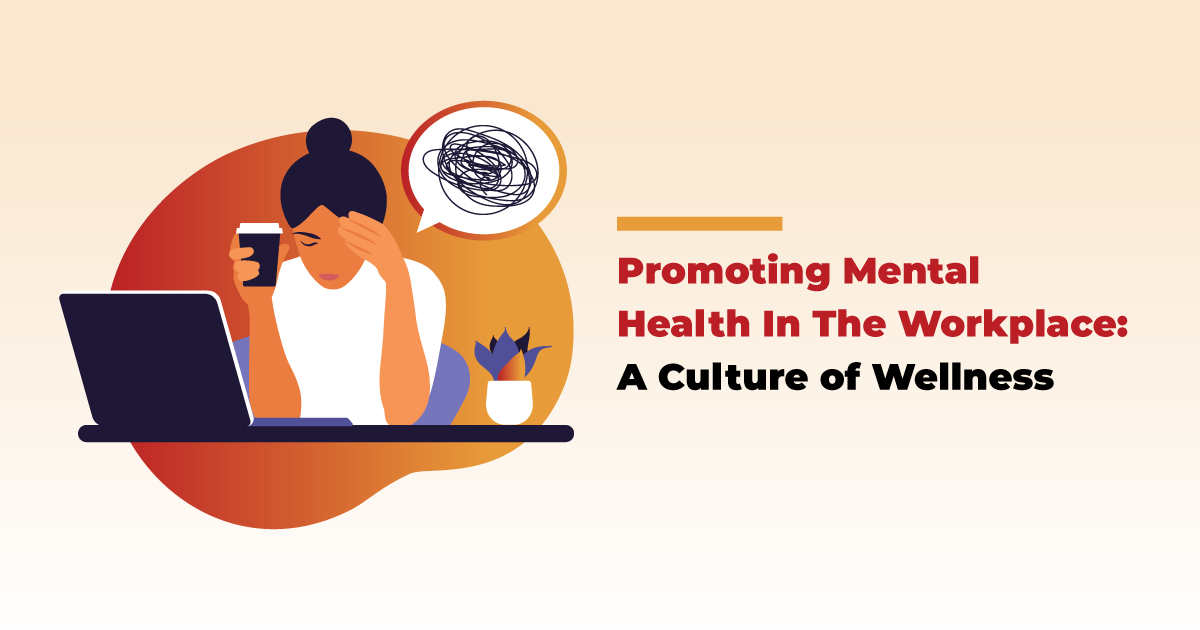May is Mental Health Awareness Month, which serves as a reminder for employers and employees to prioritize their mental well-being. Mental health is not just an individual issue; it impacts the overall productivity and success of an organization.
With long work hours, deadlines, and increasing responsibilities, it’s easy for employees to experience burnout and stress. As a result, it’s essential for employers to create a culture that promotes mental health awareness and support.
Here we’ll explore how workplaces can prioritize mental health, identify signs of burnout, and implement mental health initiatives to promote a positive work culture.
Table of Contents
Why is mental health important in the workplace?
Employers should prioritize mental health in the workplace for several reasons. Poor mental health can lead to lower productivity, increased absenteeism, and higher healthcare costs. According to the World Health Organization (WHO), depression and anxiety cost the global economy an estimated $1 trillion per year in lost productivity. Additionally, mental health issues can impact employees’ overall well-being, leading to decreased motivation, job satisfaction, and engagement.

Signs of burnout
Burnout is a state of emotional, physical, and mental exhaustion caused by prolonged stress. It’s crucial for employers to identify and address burnout to prevent long-term negative impacts on employees’ mental health.
Some signs of burnout include physical symptoms such as headaches and stomach aches, behavioural changes like isolation or decreased productivity, and emotional exhaustion.

Mental health initiatives in the Workplace
Employers can implement various mental health initiatives to support employees’ well-being. Employee assistance programs (EAPs) provide confidential support and counselling to employees struggling with mental health issues. Mental health days allow employees to take time off work to focus on their mental health without fear of judgment or repercussions.
Wellness programs, such as exercise or meditation classes, can help employees reduce stress and improve mental health. Additionally, training and education on mental health can help break down the stigma around mental health and promote a culture of openness and support.
Creating a supportive work culture
Employers can create a supportive work culture by fostering open communication, creating work-life balance, promoting self-care, and breaking down the stigma around mental health.
Creating an environment where employees feel comfortable discussing their mental health struggles and seeking support can help reduce the negative impacts of mental health issues.

Mental health awareness month
May is a great opportunity for employers to prioritize mental health initiatives and reduce stigma. Spreading awareness and reducing stigma around mental health can help employees feel more comfortable seeking support when they need it. Employers can use this month to promote mental health initiatives and encourage employees to prioritize their mental well-being.
That being said, mental health awareness should be a priority in the workplace. Employers should identify signs of burnout and implement mental health initiatives to support employees’ well-being. Creating a supportive work culture can help reduce the negative impacts of mental health issues and promote a positive work environment.
Let’s use this Mental Health Awareness Month to prioritize mental health initiatives and promote a culture of openness and support in the workplace. By investing in mental health, employers can improve the overall well-being of their employees and the productivity and success of their organization.





